In the manuscript, Memory of the sculpture studies of Luis Chilabert or Gilabert and PoncePreserved by the descendants of the aforementioned artist, which contains a detailed list of the works executed by said sculptor between 1864 and 1905, four sculptures made for the Jesuits who had settled in Xàbia are reported:
«On November 28, 1870, starting with Chambó, we concluded a life-size Purísima with clouds and pedestal commissioned by Father Peydró of the Society of Jesus in Jábea. Cost of 300 reals of fleece »
«On January 25, 1871, a two-span San Judas that Chambó helped me for Jábea, starting. Cost 135 reais of fleece »
«On May 4, 1871 I composed a Santa Ana four feet high. The composition consisted of making the head of the Virgin and the base and the eyes of the saint commissioned by D. José Esteve, for Jábea. Cost 100 reais of fleece »
On December 14, 1871, a half-hearted Saint Joseph with Chambó was commissioned by Father José Peydró in Jábea. The six-span saint with the child in his arms and a smooth base. Cost 375 reais of fleece »
These are the concise data that appear in the preserved memory, but we are left to point out some of the circumstances for which these images were made. The Jesuit Residence was located on Calle Mayor and on the second floor it had an oratory with its sacristy. It was officially constituted on April 20, 1871 when Father Peydró was appointed local superior, although previously it had already been operating in this population. It is reasonable to think that in these circumstances, in a new place, the oratory needed the presence of images that were the object of devotion among the resident Jesuits and the devotees who attended the religious acts that could take place there.
In this list of images we find three that belong to what could be called the sacred pantheon of the Jesuits: La Purísima is a figure of extreme importance for the Jesuits, so it is logical that it was the first commission for the oratory of the Residence and in addition to natural size. The third commission was the restoration of a four-foot-tall Saint Anne (as is well known, the effigy of Saint Anne is associated with that of the Virgin); The work consisted of putting eyes to Saint Anne, making the head of the Virgin and making the base, commissioned by D. José Esteve. And finally, a six-span Saint Joseph who would be special to those who formed the Congregation of Saint Joseph.
But we are surprised by the commission of a San Judas Tadeo, because we also find it in a niche in the town. The sculptor was asked for a carving of San Judas, two spans high. Why? We have inquired a bit about the origin of this devotion:
From the XNUMXth-XNUMXth centuries, the Jesuits began to speak of this apostle, San Judas Tadeo, differentiating him from Judas Iscariot with whom the faithful confused him for bearing the same name. It was also then when the parishioners, seeing him as a saint to whom no one asked for anything, began to make his requests because they considered that he had few matters to attend to, becoming the patron of 'difficult and desperate cases'.
And we have also found this image in the niche of Plaça de Baix as Erika Reuss testifies to its existence when writing her book Las Hornacinas or capelletes de Jávea. In relation to this presence, we will say that the house 'dels Catalans' of the family of Juan Bolufer Cholbi should have been placed in his niche at the end of the XIX or beginning of the XX, although it disappeared in the confused moments of the 30's and has been in the last years, due to the family memories of Inés Castelló Marí, when the image was searched for and commissioned to occupy the place previously occupied by that saint.
With these clarifications, we are left to talk about the protagonists of this story, beginning with the Jesuit José Maria Peydró Botella, and the sculptors Luis Gilabert, and Manuel Chambó.
The figure of José María Peydro, born in 1832, must have had a great influence on the society of Javie in the last years of the 1874th century, since in addition to being the Superior of the Jesuit Residence, which initially remained until 1893, he returned in June 8 to organize a great children's consecration of boys and girls to the Sacred Heart of Jesus, which was verified on June XNUMX of that year as can be seen in the book The Jesuits in Jávea.
Luis Gilabert Ponce, was born in Valencia on June 21, 1848, in the bustling Velluters neighborhood, specifically on Calle Torno del Hospital. He began his training as a sculptor in the workshop of Antonio Esteve Romero; Later he studied art at the San Carlos School of Fine Arts, where he was a student of Francisco Molinelli Cano who is the author of the Virgen del Rosario located on the facade of the palace of the Marquis de Dos Aguas in the city of Valencia.
He participated in the Valencia Regional Exhibition of 1867, organized by the Royal Economic Society of Friends of the Country, with a plaster bust of his father, for which he deserved a copper medal; a year later, at the Aragonese Exhibition he presented a polychrome wooden carving of the Immaculate Conception for which he obtained a similar medal; at the Fair Exhibition in July 1873 he received first prize for a statue of D. Jaime I; in Madrid in 1878, he competed for a sculptor's post in the Spanish Academy of Fine Arts in Rome, finishing second. Author of numerous religious works, many of which were lost during the war of 1936-1939.
In 1894 he held the position of anatomical sculptor at the Valencia Faculty of Medicine; appointed in 1907 academic number of the Royal Academy of San Carlos and, later, third consiliary thereof. His death occurred on September 20, 1930 in the city where he was born.
Manuel Chambó y Mir, born in Valencia on January 5, 1848, lived during his studies, carried out at the San Carlos School of Fine Arts, on Calle del Pilar, located in the so-called Velluters neighborhood, in the same way that his fellow student Luis Gilabert Ponce, with whom he collaborated assiduously as an imager between the years 1869 and 1876, as reflected in the aforementioned manuscript. He participated in the usual exhibitions that took place in the Valencia of his time, exposing his works as Luis Gilabert did, in the shop windows of the popular Zaragoza street. He passed away in his hometown on January 15, 1913.
In this case, the images ordered could possibly be taken to the Gandia Residence where the Jesuits moved after the closure of the Jávea residence in 1878 or suffered other vicissitudes. But this shows how much history of Jávea is outside the town as in this case, but it is sure that the existing group of researchers can find much more data on local history by chance.
Ramón Llidó in his book Jávea, a hidden paradise, indicates that there is a niche without an image, and the same in From Jávea by Juan Codina in 1985, while Erika Reuss already shows an image in the said niche.For this work we have collected information pertinent to our friend Godofredo Cruañes and the Bolufer Castelló family because there is a lot of oral history that the elders can still transmit to us, but you have to listen and ask them. Our thanks.





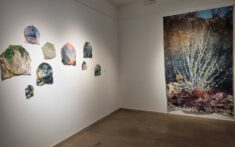
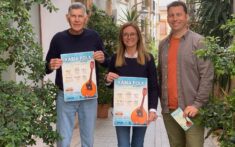
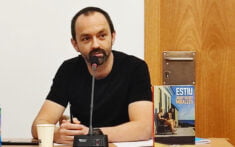
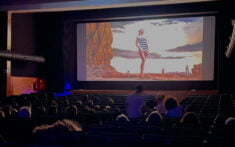
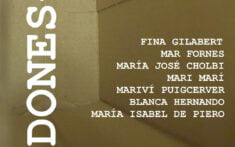
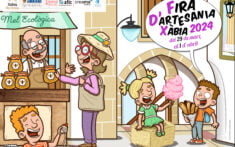
My congratulations to the researchers Mr. Juan Bautista Codina Bas and Ms. Elvira Más Zurita for the work that it involves, an investigation and even more when the investigation belongs to my grandfather. thank you, thank you and thank you.